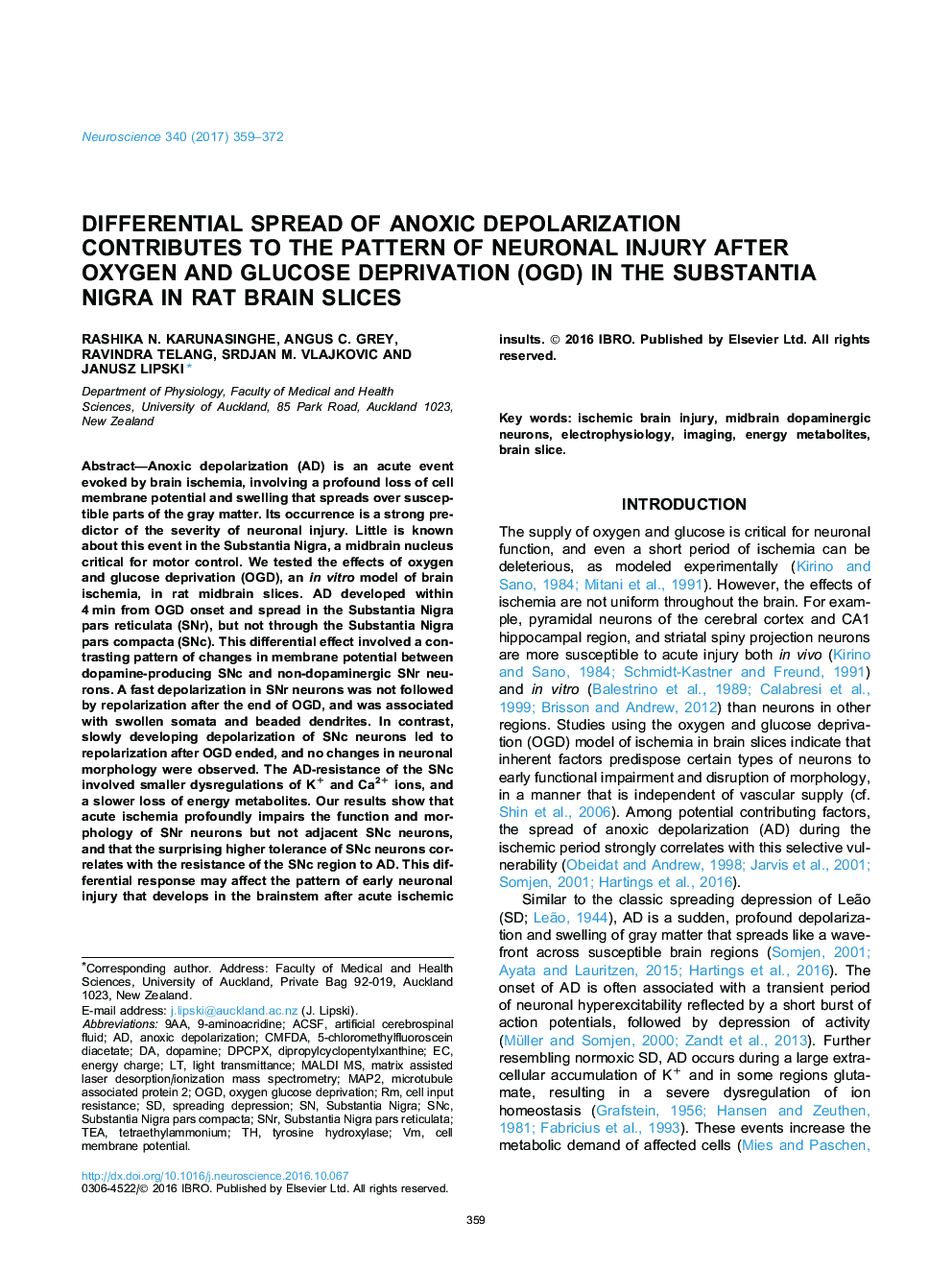| کد مقاله | کد نشریه | سال انتشار | مقاله انگلیسی | نسخه تمام متن |
|---|---|---|---|---|
| 5737558 | 1614736 | 2017 | 14 صفحه PDF | دانلود رایگان |

- Oxygen-glucose deprivation (OGD) mimicks many features of brain ischemia.
- OGD evokes differential responses in the Substantia Nigra in brain slice.
- During OGD, anoxic depolarization (AD) occurred only in the SN pars reticulata (SNr).
- The absence of AD in the SN pars compacta (SNc) reflects resilience of its dopaminergic neurons.
- The differing ischemic responses may explain the mechanisms underlying acute-onset motor disorders.
Anoxic depolarization (AD) is an acute event evoked by brain ischemia, involving a profound loss of cell membrane potential and swelling that spreads over susceptible parts of the gray matter. Its occurrence is a strong predictor of the severity of neuronal injury. Little is known about this event in the Substantia Nigra, a midbrain nucleus critical for motor control. We tested the effects of oxygen and glucose deprivation (OGD), an in vitro model of brain ischemia, in rat midbrain slices. AD developed within 4Â min from OGD onset and spread in the Substantia Nigra pars reticulata (SNr), but not through the Substantia Nigra pars compacta (SNc). This differential effect involved a contrasting pattern of changes in membrane potential between dopamine-producing SNc and non-dopaminergic SNr neurons. A fast depolarization in SNr neurons was not followed by repolarization after the end of OGD, and was associated with swollen somata and beaded dendrites. In contrast, slowly developing depolarization of SNc neurons led to repolarization after OGD ended, and no changes in neuronal morphology were observed. The AD-resistance of the SNc involved smaller dysregulations of K+ and Ca2+ ions, and a slower loss of energy metabolites. Our results show that acute ischemia profoundly impairs the function and morphology of SNr neurons but not adjacent SNc neurons, and that the surprising higher tolerance of SNc neurons correlates with the resistance of the SNc region to AD. This differential response may affect the pattern of early neuronal injury that develops in the brainstem after acute ischemic insults.
Journal: Neuroscience - Volume 340, 6 January 2017, Pages 359-372